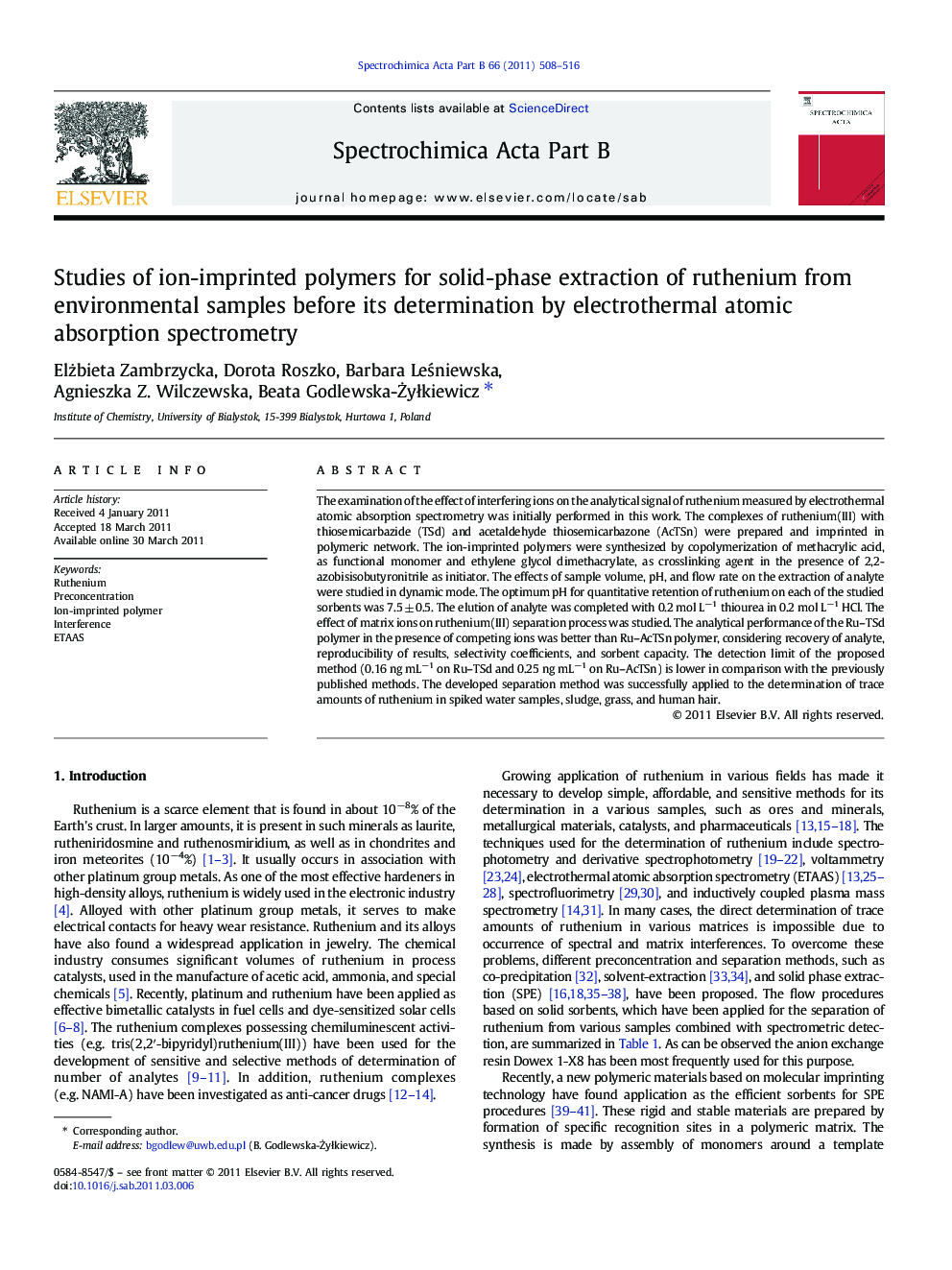| Article ID | Journal | Published Year | Pages | File Type |
|---|---|---|---|---|
| 1240288 | Spectrochimica Acta Part B: Atomic Spectroscopy | 2011 | 9 Pages |
The examination of the effect of interfering ions on the analytical signal of ruthenium measured by electrothermal atomic absorption spectrometry was initially performed in this work. The complexes of ruthenium(III) with thiosemicarbazide (TSd) and acetaldehyde thiosemicarbazone (AcTSn) were prepared and imprinted in polymeric network. The ion-imprinted polymers were synthesized by copolymerization of methacrylic acid, as functional monomer and ethylene glycol dimethacrylate, as crosslinking agent in the presence of 2,2-azobisisobutyronitrile as initiator. The effects of sample volume, pH, and flow rate on the extraction of analyte were studied in dynamic mode. The optimum pH for quantitative retention of ruthenium on each of the studied sorbents was 7.5 ± 0.5. The elution of analyte was completed with 0.2 mol L−1 thiourea in 0.2 mol L−1 HCl. The effect of matrix ions on ruthenium(III) separation process was studied. The analytical performance of the Ru–TSd polymer in the presence of competing ions was better than Ru–AcTSn polymer, considering recovery of analyte, reproducibility of results, selectivity coefficients, and sorbent capacity. The detection limit of the proposed method (0.16 ng mL−1 on Ru–TSd and 0.25 ng mL−1 on Ru–AcTSn) is lower in comparison with the previously published methods. The developed separation method was successfully applied to the determination of trace amounts of ruthenium in spiked water samples, sludge, grass, and human hair.
